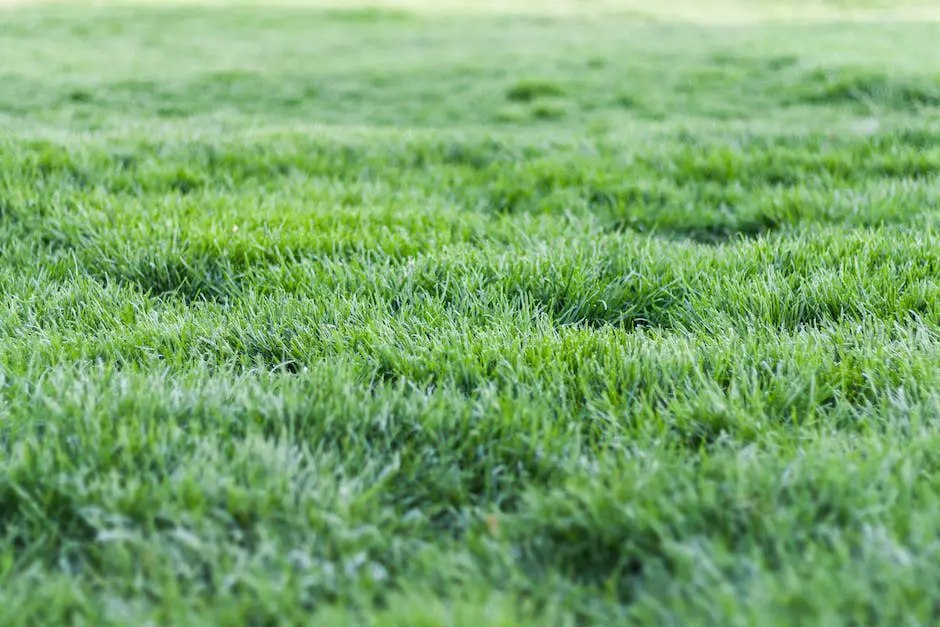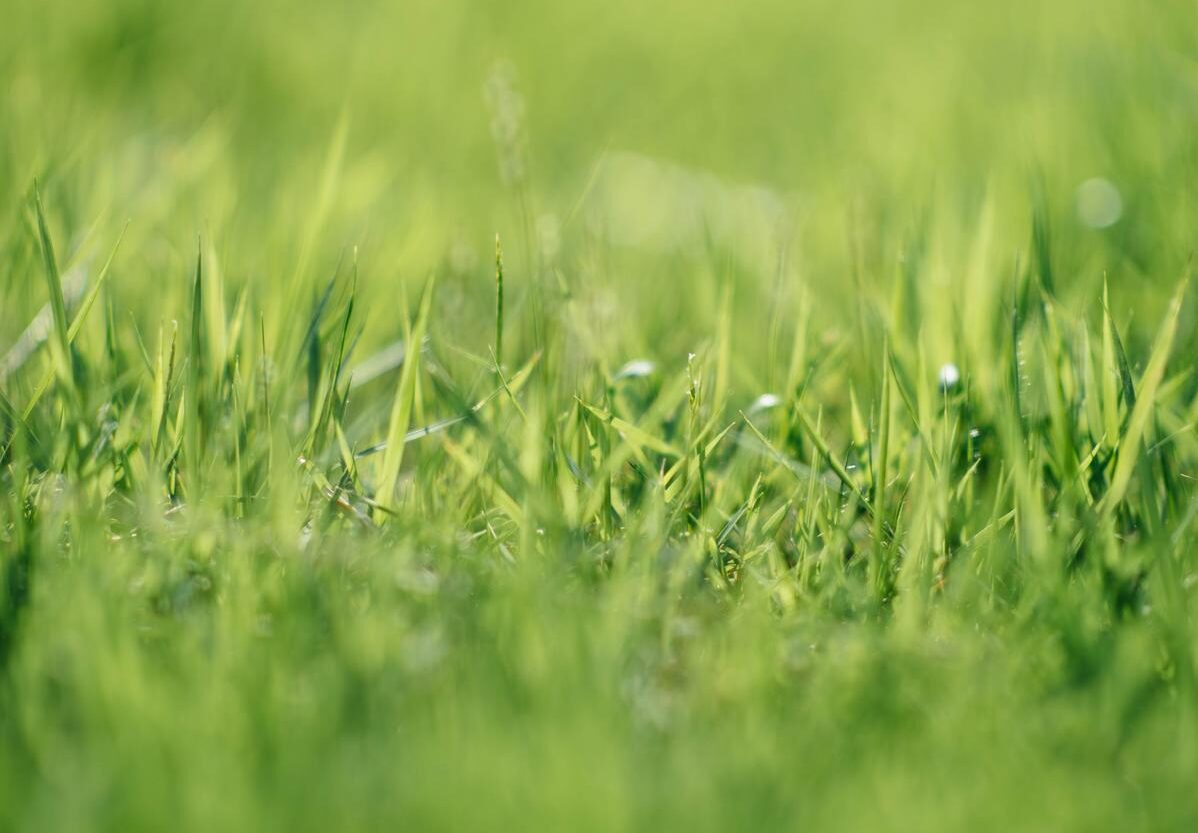For many homeowners, a well-maintained green lawn is the epitome of pride and an indication of their diligent upkeep. While maintaining a healthy lawn may seem intimidating for beginners, understanding essential lawn care requirements can simplify the process.
No matter the type of grass that adorns your front yard, knowing its specific needs and providing it with the right care can transform your lawn into a lush, verdant space. This article will explore critical areas of lawn care.
You will learn about assessing your lawn’s condition, understanding the optimal soil conditions for your grass type, and the right ways to mow your lawn. Furthermore, it will delve into fertilization and watering practices tailored for specific grass types.
Understanding Your Lawn’s Needs
When on the quest for a beautiful lawn, it’s essential to remember that no two yards are the same. However, some fundamentals apply universally. In simple terms, the care and nourishment of a lawn is about meeting its needs to stay lush and green.
It might sound tricky, but when the right techniques and guidelines are followed, the lawn will love you back tenfold. Ready to delve in? Here’s a concise guide to the essential requirements for a healthy lawn.
Quality Soil
Every thriving lawn starts with quality soil. The grassroots tap into this nutritious base, taking in all the necessary nutrients for growth. A pH test should be conducted to identify the soil’s acidity or alkalinity levels, which significantly influence nutrient availability. Ideally, lawns flourish in slightly acidic soil, with a pH range of 6 to 7.
Suitable Grass Type
Selecting an appropriate grass type can be the difference maker. Different grasses thrive in different conditions—some love the sunshine, while others do well in shade. Some grasses are drought-tolerant, and others prefer a constant source of moisture. Therefore, understanding the yard’s overall climate and choosing a compatible grass type is crucial.
Plenty of Sunlight
Sunlight is a key player in the photosynthesis process, which grass requires to grow effectively. Most types of lawn grass require at least six to eight hours of sunlight daily. However, some shade-tolerant varieties can survive on less.
Watering
Watering is an essential part of lawn care, especially for newly sown grass. Generally, lawns require about one inch of water per week, including rainfall. Watering should ideally be done early in the morning to limit evaporation so the lawn will dry out before nightfall to avoid diseases related to dampness.
Proper Fertilization
Fertilizing can give the lawn the nutrients necessary for optimum health and growth. The three primary elements in any fertilizer are nitrogen, phosphorus, and potassium. Each of these plays a significant role in the color, growth, and overall health of the grass.
Regular Mowing
Regular mowing maintains a tidy and healthy lawn, but the mowing height and frequency depend on the grass type. Create a mowing schedule, but remember to never remove more than one-third of the grass blade at once. This rule prevents unnecessary stress and damage to the lawn.
Pest and Weed Control
Finally, preventing and controlling pests and weeds is critical. They compete with the grass for vital nutrients and can rapidly destroy a lawn if left unchecked. Therefore, it’s necessary to adopt good weed and pest management strategies.
By meeting these fundamental requirements, anyone can achieve a lawn that’s not only visually appealing but healthy and vibrant. Let’s remember that a lush, green lawn is a labor of love, so don’t be discouraged by initial struggles. Stay patient, and your grass will reward you with its vibrancy and lushness. Happy gardening!

Proper Lawn Mowing
Dive right into the vibrant world of lawn care, and one will quickly realize that creating and maintaining a beautiful outdoor carpet is both an art and a science. It’s more than just a chore; it’s a passion that unravels the rewards of nature one blade of grass at a time.
Past the basics like choosing quality soil, selecting an appropriate grass variety, providing adequate sunlight, watering, and fertilizing appropriately, comes another crucial aspect that significantly influences lawn health – the correct mowing approach.
Mowing, more than just a mere maintenance task, influences not just the aesthetic appeal but also the general well-being and longevity of the turf. The way one mows, the timing, the mowing height, the blade’s sharpness, and the pattern are all parts of a bigger picture, each one intertwined with the health and vigor of the lawn.
Choosing the Correct Mowing Height
Choosing the correct mowing height is paramount. Cutting grass too short, also known as “scalping,” can expose the plant’s crown to severe sun damage and deplete its energy reserves, leading to weak growth and dull color.
Conversely, keeping it too high can lead to thatch build-up and foster disease and pest infestations. To strike a happy balance, a general guideline is to cut only one-third of the grass blade during each mowing session, adjusting accordingly to the specific grass type and the season.
Maintaining a Sharp Blade
Next on the roster is the blade’s sharpness. A dull mower blade rips through the grass, rather than cutting it cleanly, causing jagged tips that brown quickly and make the lawn look unhealthy.
Furthermore, these jagged edges form an easy gateway for disease and pests, leading to unhealthy grass. Keeping the mower blade sharp not only helps achieve a clean, neat cut but also promotes quicker healing and stronger grass growth.
Perfectly Time Your Mowing
Timing is another key factor. The best time to mow is when the lawn is dry, as wet grass can clog mowers, clump together, and hinder an even cut. Moreover, grass tends to stand taller when it’s dry, ensuring a straight cut.
Follow a Mowing Pattern
Then there’s the mowing pattern. Following the same pattern repeatedly leads to soil compaction and grass leaning in the mowing direction, causing an uneven cut. By altering the mowing direction during each session – one time vertically, next time horizontally, then diagonally – one can ensure even growth and keep the lawn looking tidy and vibrant.
Remember, while focusing on maintaining a flourishing lawn, paying attention to safety is crucial. Always wear protective gear, follow the mower manufacturer’s instructions, and be aware of children and pets during mowing.
The right mowing approach is not just about keeping things neat and pleasing to the eye. It’s about fostering a robust, healthy environment where grass can thrive. It’s about nurturing a vibrant part of nature right outside your front door. Because the satisfaction of a lawn caretaker lies in each healthy, crisp, and radiant blade of grass swaying in their yard.

Lawn Fertilization and Watering
Now that the basics of lawn care have been thoroughly covered, let’s delve into the ideal fertilization and watering strategy for a thriving lawn, taking into account both seasonal changes and the specific needs of your grass type.
Firstly, it’s crucial to identify the fact that the growth and beauty of your lawn are dependent on the delicate balance between fertilization and watering. Both activities nourish the grass, but they must be carried out strategically.
From early spring, it is often beneficial to begin fertilization. Typically, four to five applications of fertilizer annually are considered standard – usually during spring, early summer, late summer, and fall.
Remember, a slow-release granular fertilizer offers excellent coverage and long-lasting effectiveness. Also, avoid over-fertilizing, as excessive nutrients can interfere with the grass’s healthy growth.
Regarding watering, the fundamental rule is to water deeply and infrequently rather than shallowly and often. In the absence of rainfall, supply your lawn with approximately 1 to 1.5 inches of water per week. The goal is for the water to penetrate 6 to 8 inches into the soil, encouraging deep root growth and a more drought-resistant lawn.
It is generally advised to water early in the morning to reduce evaporation and give the grass blades time to dry before evening, discouraging disease formation.
Water Moderately After Fertilizing
After fertilizing, it is pertinent to water the lawn moderately, allowing for the nutrients to seep into the soil and become accessible to the roots. However, be mindful of the weather. If heavy rain is expected, delay fertilization to prevent the nutrients from being washed away.
Seasonal adjustments are also key. During hot and dry periods in summer, it’s best to lightly water the lawn more frequently, ensuring the grass remains hydrated but not oversaturated which could lead to disease or fungus. In fall, reduce watering as the grass growth slows down but maintain regular fertilization to strengthen roots for the impending winter.
Additionally, be cognizant of the unique needs of your specific grass type. Different grass types have varied watering and fertilizing requirements which are crucial for advantageous growth.
Through this harmonious dance of fertilization and watering, you can foster a lush, verdant lawn that not only supplements the beauty of your home, but also, aids in creating a lively ecosystem, promoting the well-being of your local fauna.
Remember, the cornerstone of effective lawn care is understanding; knowing your lawn’s needs and being prepared to tweak your routine accordingly is what truly fosters a vibrant, healthy lawn. Therein lies the pleasure and success of this hobby. So, grab that watering can and make every drop count!
Becoming a Lawn Care Master
As you tread on the path to becoming a proficient lawn caretaker, remember the key lies in understanding and fulfilling your lawn’s needs. By learning the appropriate techniques on how to mow your lawn, maintain your mower, and master the art of lawn fertilization and watering, you will witness an enviable transformation of your front yard.
Each patch of grass in your lawn has its own set of requirements. Treating them with due understanding, patience, and consistency ensures that they pay you back in the form of a vibrant, lush green lawn. Here’s to a healthier, happier lawn that enhances not just the beauty of your home but the happiness of your soul.

